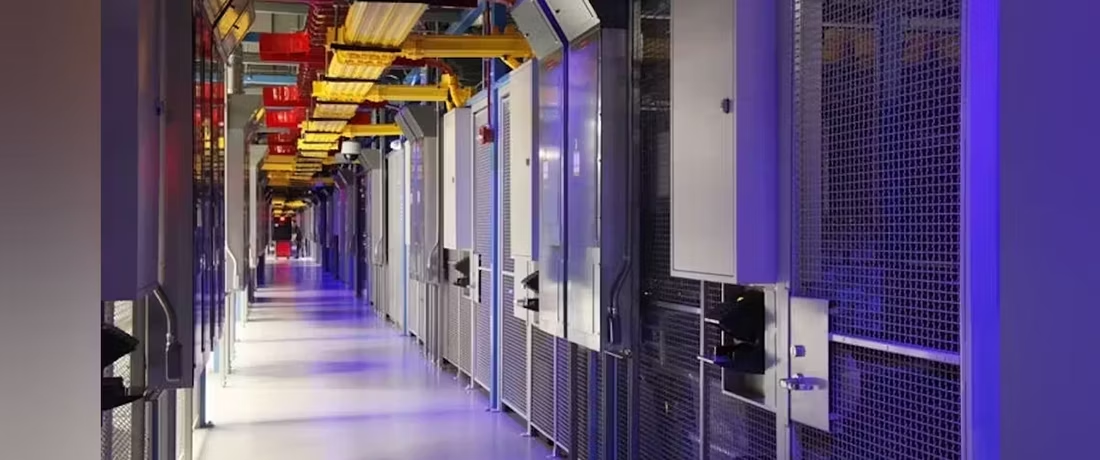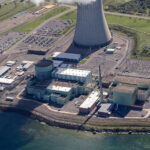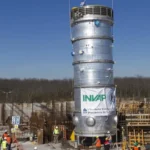Brazil’s nuclear energy sector is optimistic about future opportunities to meet the growing demand for constant, reliable and non-intermittent power in the local datacenter industry.
Currently, nuclear energy accounts for only about 3% of Brazil’s energy matrix, generated by two major nuclear plants in Angra dos Reis, Rio de Janeiro. It is primarily used for applications in healthcare, industry and research and development.
However, the sector aims to expand its role and is betting on the comparative advantages that nuclear energy can offer, particularly in terms of stability for datacenters. In the past week, Brazil’s nuclear association Abdan and datacenter association ABDC signed an MOU to advance joint initiatives.
“Our goal is to launch joint actions with congress, conduct feasibility studies and explore financing possibilities for nuclear companies under the credit lines for AI and datacenters offered by [financing and research entity] Finep,” Abdan president Celso Cunha told BNamericas.
“It’s a segment that increasingly requires safe, constant and large-scale energy. The world is recognizing this and it will happen here as well. It’s not imminent, but we do have a path to follow,” added Cunha.
The sector is primarily focusing on small modular reactors (SMRs). These reactors, with a maximum capacity of 300MW per unit, require a smaller mandatory safety radius than large nuclear plants, take up less space and land than hydroelectric, solar and wind farms, and provide uninterrupted 24-7 energy.
Energy experts and the nuclear industry expect that nuclear power supply for datacenters in Brazil via SMRs could become a reality from 2030 onwards.
The ABDC-Abdan partnership was formalized at a seminar in São Paulo on February 20, organized by both associations in collaboration with datacenter-focused engineering firm LZA.
The event took place at the headquarters of Amazônia Azul, Brazil’s state-owned nuclear research company, which operates under the ministry of defense and the Brazilian navy.
Renan Alves, president of ABDC, believes the key word is preparation.
“This work with Abdan is a long-term effort. Awareness starts now because our datacenter clients here are beginning to invest in and acquire nuclear plants for their operations abroad,” Alves told BNamericas.
According to Alves, Brazil must prepare in advance – developing its supply chain, nuclear fuel types, R&D and regulations – for a future that could materialize in five years or more.
For now, he warned, Brazil’s primary focus and main appeal for the datacenter sector in terms of power remains its renewable energy matrix.
“In the same way that companies like Google and AWS bring their own equipment setups for datacenter projects in Brazil, I see no reason why they wouldn’t bring their own SMR setups in 10 years when the technology is more mature,” Alves added.
Investments and industry outlook
Amazon, Google and Microsoft are increasing their investments in nuclear power, primarily in the US, to meet the growing energy needs of datacenters and AI.
In September 2024, Microsoft brokered a PPA agreement with Constellation Energy to purchase electricity from one of its dormant reactors at the Three Mile Island nuclear plant in Pennsylvania.
In October, Amazon announced a US$500mn investment in X-Energy to support the construction of a nuclear fuel fabrication facility and multiple SMRs in the US, with a goal of bringing 5GW of new nuclear power online by 2039.
Amazon also has an agreement with Energy Northwest to develop an SMR project in Washington state.
Google, for its part, signed an agreement in October to purchase energy from multiple SMRs being developed by Kairos Power.
At the São Paulo event, industry expert and nuclear engineering specialist Carlos Leipner highlighted that nuclear energy accounts for 9-10% of global electricity generation, with 440 reactors operating in 30 countries, providing a combined capacity of approximately 400GW.
According to Leipner, 65 new nuclear reactors are currently under construction in 15 countries.
Brazil holds some of the world’s largest uranium reserves, but only about a third of its potential has been explored, he said.
Advantages and challenges
Although Brazil’s national grid is more interconnected than those of other markets, many wind and solar projects are concentrated in regions like the northeast, where transmission infrastructure is more limited and it is far from the southeast and south, where datacenter hubs are located.
Moreover, solar and wind energy sources cannot provide the stability, availability and volume required to support the growing energy demands of datacenters, according to Abdan.
As the share of intermittent renewable energy increases in Brazil’s grid, the need for curtailments (forced energy reductions) also grows.
Even proposed solutions to mitigate grid instability, such as battery storage and hydrogen, are currently unfeasible, Abdan argues.
“These alternatives remain prohibitively expensive. Imagine needing a battery capable of handling 1GW of fluctuation – there is neither the technology nor a viable solution for that,” Cunha said.
Additionally, even hydroelectric power, which accounts for more than 55% of Brazil’s energy matrix, faces challenges.
“About 40% of our hydroelectric plants are over 40 years old and the risks associated with water availability are significant,” said Cunha.
A recent Moody’s study highlighted that “economic volatility, particularly exchange rate fluctuations, [in addition to] political uncertainty and water management risk represent obstacles to long-term investment returns and reduce part of Latin America’s attractiveness for the development of new datacenters.”
For now, however, nuclear power for datacenters in Brazil remains a long-term prospect.





